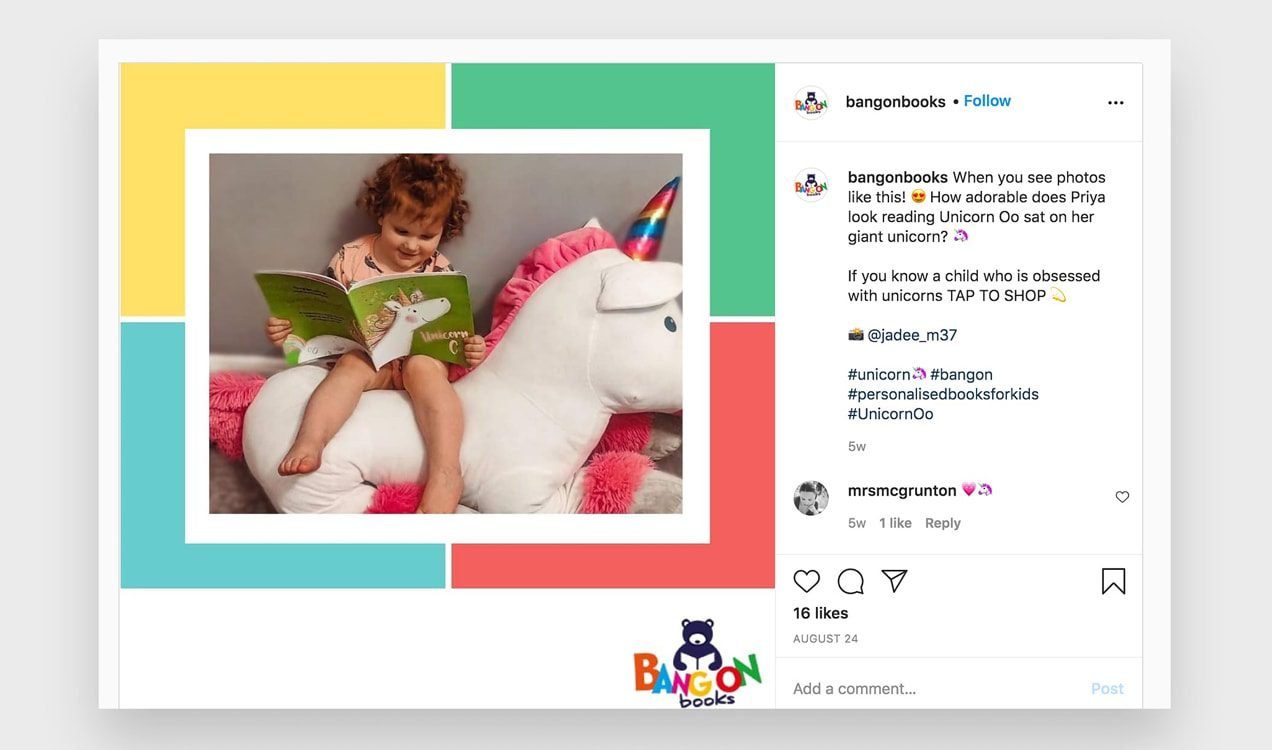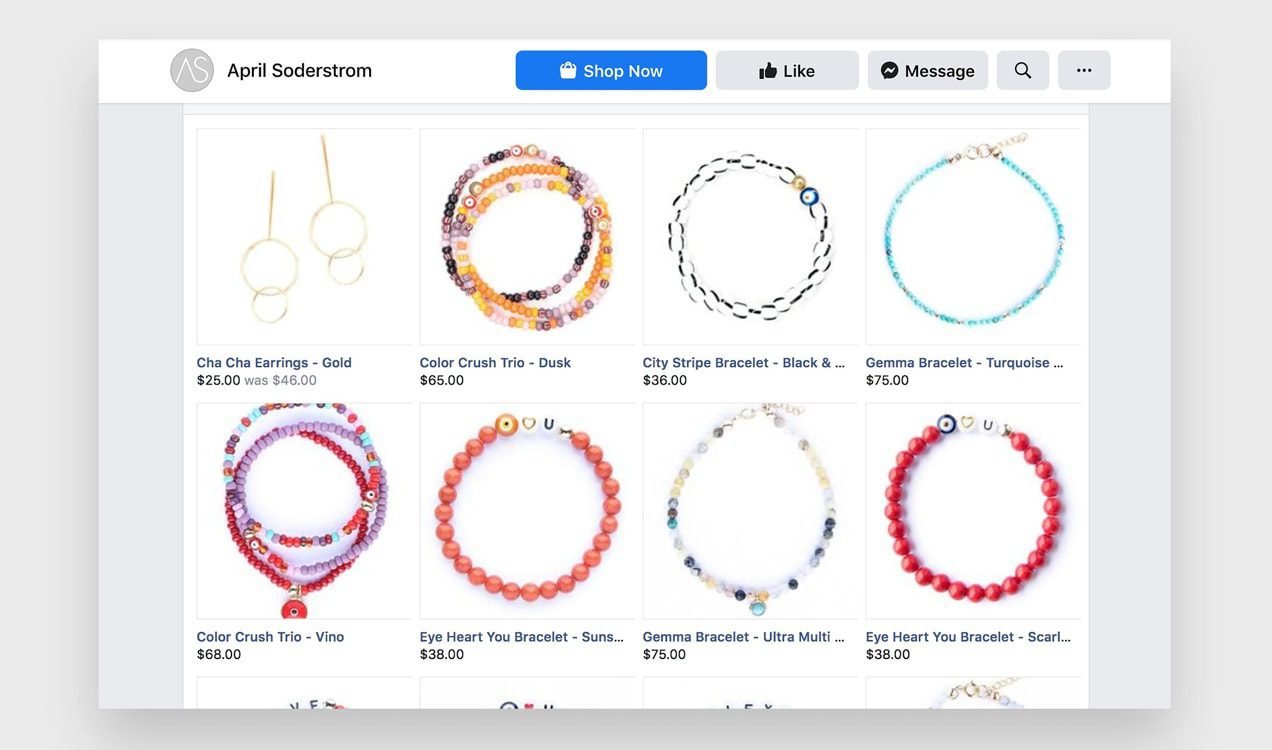Social media is a powerful way to promote your products, reach new customers, and build a community around your business. There are very few limits to what you can do with social media, but with unlimited possibilities comes the risk of spreading yourself too thin. The good news is that by following a few best practices, your online store can find success.
Nine ways to use social media
1. Find new customers
Many business owners turn to social media for the promise of free advertising or an endless stream of buyers. Though this can be a benefit, there’s a lot more involved and, as you’ll find out later, there’s not really such a thing as “free” customers.
So how do you reach people on social media? Most platforms have advertising tools you can use to target your ideal audience based on demographics and interests. Usually, it’s best to provide value with great content instead of immediately advertising something for sale. Focus on serving or entertaining your audience first. Sales will come later.
Join social media groups that your audience is involved in. Again, look to provide value and build relationships — not just peddle your items. Create incentives for happy customers to share your business with their friends. After all, a natural referral is more valuable than any advertising you can do! Or, partner with an influencer to share your products with their followers in exchange for a fee or gift.
Be specific: Choosing an audience is one of the most important aspects of starting a successful online store. Learn how to find your perfect audience in our “From Idea to First Customer” series.
2. Interact with your community
On average, users spend more than two hours per day on social media. This gives you the opportunity to be present and meet them where they are.
When someone has a positive (or negative) experience with your company, they may reach out on your social media accounts. By reacting quickly, you can turn a complaint into an amazing customer service story or capture a testimonial for future marketing.
Social platforms use algorithms to determine who should see your posts. Their goal is to show each user only the content that’s relevant or valuable to them. If your post has a high level of engagement (comments, likes, or shares) they’ll assume the post is valuable and show it to more people.
Followers are much more likely to engage if they feel like someone is actually listening and engaging back. So when someone comments, respond!
Also keep an eye on comments and direct messages to answer common questions, help solve problems, or thank people for compliments.
3. Get new ideas
You can bet your competitors are already on social media. Keep tabs on what they post and what their fanbase is saying to inspire your own ideas.
Encourage followers to contribute. Stay receptive to feedback on posts and products to learn how to improve your offering. Spending time on social media will also help you keep up with trends so you can make the most of popular memes or new phrases.
4. Reinforce your brand and stay top of mind
Social media isn’t just about directly selling your product or service. By staying in followers’ feeds with relevant posts, you’ll gain trust and be top of mind the next time they’re in the market for what you offer. Or you may remind them to refer you to a friend!
5. Prove your value and recover abandoned carts
Some companies have a long selling process that requires proof of concept. This is particularly true for expensive items, business-to-business offerings, and products that require extensive planning.
Post success stories, testimonials from happy clients, and pictures of your team to slowly gain the trust of potential customers. A travel brand might post vacation pictures, so people keep dreaming about adding that destination to their list. A solar panel company might share pictures of completed installations with customer testimonials.
Most customers don’t even purchase small items right away. They investigate and decide to come back later. They might find something they like better or lose interest. If someone’s looking through dozens of different shoes trying to make a choice, they might even forget exactly where they saw the first one they loved (yours).

You can use remarketing ads to show a specific item to the person who viewed it. This is a great way to remind them that they loved your product the most! Add a discount or free shipping coupon and they’ll be even more likely to come back.
6. Gather user-generated content
Content from actual customers and fans is almost always better received by potential buyers than anything you can create. Posting a happy picture of a real family using your product is much more effective than hiring perfect-looking actors to play the part.
And it can be expensive to arrange photoshoots, write new material, or reach out to buyers individually. But with social media, you can gather photos, testimonials, reviews, and stories directly from followers much more affordably and efficiently.

Encourage users to create and share their photos and videos simply by posting what others have done — people will want to participate. You can also create a competition for the best one, with a fun prize for the winner.
7. Re-engage previous customers
Install tags — like Facebook’s ad pixel — and reach out to previous customers, even if they haven’t purchased in months. Release a new t-shirt design? Share it with the people you know love your products. Prepare a client’s taxes last year? Reach out with a reminder about filing dates.
8. Sell your products
Yes, on some platforms you can sell your products directly! Facebook and Instagram both allow you to create a store, post pictures, tag products for sale, and let customers browse all while staying on their favorite social platform. Instagram is especially powerful for brands where art, visuals, or design are key, since it’s so visual.

Use the Facebook for WooCommerce extension to sync products seamlessly.
9. Explain difficult concepts
If you offer something that requires more than a picture and a sentence to understand, social media allows you to communicate how it works through video. Or, use a series of posts to explain each component of your business over time.
Social media best practices
While you can use social media in nearly endless ways, there are a few basic principles to follow:
Social media isn’t really free
One of the most damaging misconceptions about social media is that it’s a free way to find new customers. And while it’s usually free to join, that alone won’t get you very far.
To reach new customers and grow your brand on social media, expect to invest:
- Sweat equity: Spend time getting the word out in groups, commenting on other content, and asking for attention.
- Money: Pay for advertising to multiply your efforts.
Realistically, you’ll probably invest some of both. You may also want help from a social media expert or virtual assistant so you can focus on other areas of your business. Either way, take social media seriously, consider it a long-term investment, and you’ll rock the social media landscape.
It’s a house party
Or is it a barbecue? Either way, approach social media like you’re attending a function. At a party, you wouldn’t gain much popularity by going up to each person, showing them pictures of your product, and constantly asking them to, “Buy now!”
Instead, focus on making friends. Share interesting stories, react to what others have to say, and add value to everyone’s experience. Then, people will be open to hearing about what you have to offer.
When used correctly, social media feels more natural to potential customers. Instead of interrupting their favorite TV program, you can gently get involved in their community. Your post will show up right after one from their best friend. Don’t ruin this benefit by being annoying, posting too much, or sounding desperate for sales. Be a friend, not a salesperson!
Focus
There’s no need to join every social media platform — there are hundreds! Instead, focus on a few and use them really well. You can copy and paste posts across several platforms, but for maximum engagement, edit your content to meet the unique requirements of each one.
Should you choose Facebook or Instagram? Pinterest or Linkedin? Make this decision based on your type of business and target audience. We’ll outline the major platforms, their benefits, and examples of how to use them in the next article. However, Facebook is the most versatile and widely used, so it should be near the top of your list.
Social media isn’t everything
And it’s rarely the only way to create a successful business. Consider it one powerful tool in your arsenal. Don’t forget about search engine optimization, pay-per-click ads, and offline marketing opportunities. Social media is best when you create “word of mouth,” but you can also do this with real people, in person!
Your site is your central hub
No matter what social media platform you use, how much time or money you spend, or how much value you add to the community, you don’t actually own your space. If Facebook decides you’ve violated a policy, they can remove you forever. If a platform loses popularity with your core demographic, you’ll have to build something new.
On the other hand, you own your WordPress website. Send people there to view valuable posts, products, and other content. Tag visitors to reach them on social media in the future and build an email list that you can take wherever you go.
What’s next?
If you follow some basic principles and invest some time or money, you can find massive success with social media. In our next post, we’ll walk through the most popular platforms in the United States, the benefits of each, and some example scenarios to inspire your social media adventure.

